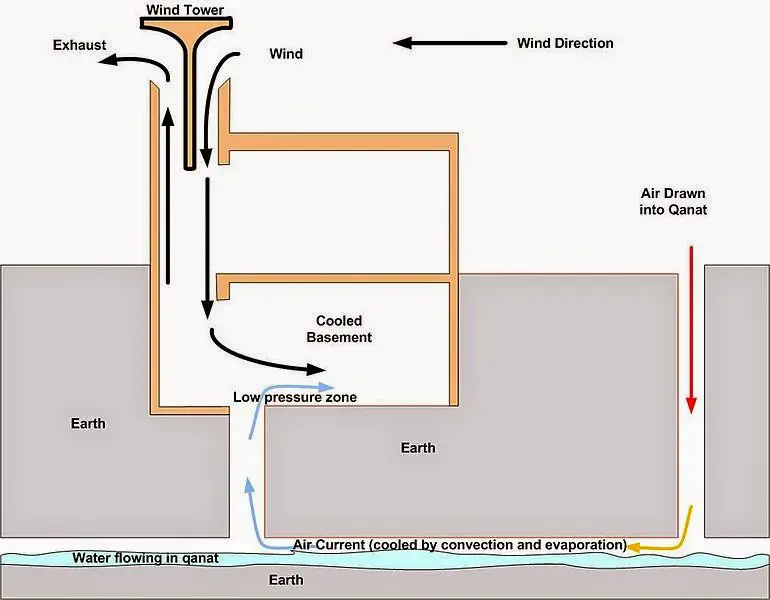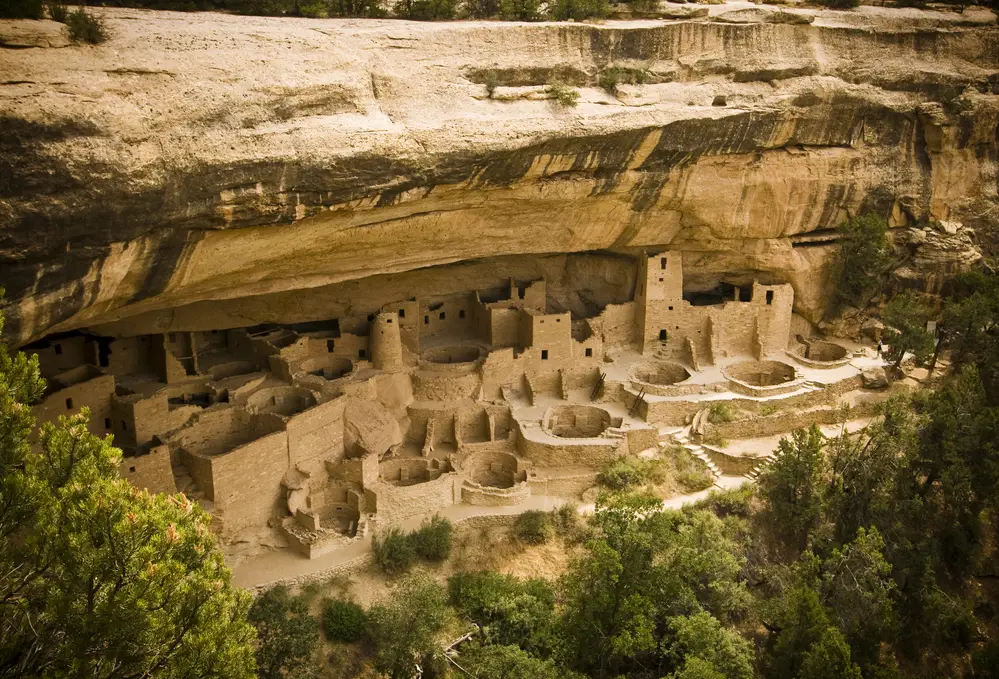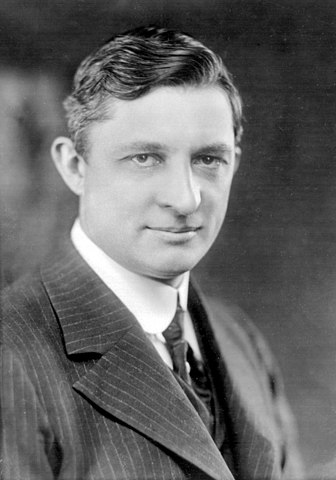There are times during the summer when getting in a car feels like crawling in an oven. Tiny beads of perspiration cling to your head, and it feels like the seventh dimension of hell. But here comes some cool air to save you from insanity. Of course, we have the convenience of modern air conditioning, but how did people throughout history handle excessive heat?
Turning that knob on the AC and blasting cold air so you won’t melt took some amazing discoveries and a whole bunch of ingenuity. It’s been over 110 years since Willis Carrier created the modern version of air conditioning. But humans have been able to handle the heat for hundreds of thousands of years. Nomads lived in the desert, and people were able to thrive in the tropics and jungles. How did they do it?
The first documented attempts at staying cool on a large scale came from the Romans and their system to circulate cool aqueduct water through the walls of their homes. Emperor Elagabalus even transported snow from the mountains to store next to his villa during the summer in order to stay cool. People in desert areas made villages with tall buildings that provided shaded paths between the buildings, which had small windows facing away from the sun. In addition, the buildings were set up to catch the best cooling tool — the wind.
Windcatchers were used to funnel the wind into buildings and have been primarily used in North Africa and the Middle East over the past 3000 years. There was typically more than one, depending on the building’s size, the wind direction, and dust, and there were three types of windcatchers. One type forced wind into a house through a tower. The tower could be swiveled to catch the prevailing wind, and the dust in the air would collect outside at the bottom of the building.
The second type of windcatcher acted on a principle of the “Coanda effect,” which is the observed tendency of a jet of gas or liquid to be attracted to nearby surfaces. It is an effect still used by modern air conditioning systems. With this windcatcher, hot air moved into a tower and then toward a basement area where it would be cooled by water from a qanat or underground aqueduct. As a result, a temperature difference was created, and cool air was forced out of the basement and out of the tower, effectively cooling anything it flowed over.
The third type of windcatcher was a solar collector that heated a chimney and caused a vacuum effect that drew air from cooler underground tunnels as the heated air rose.
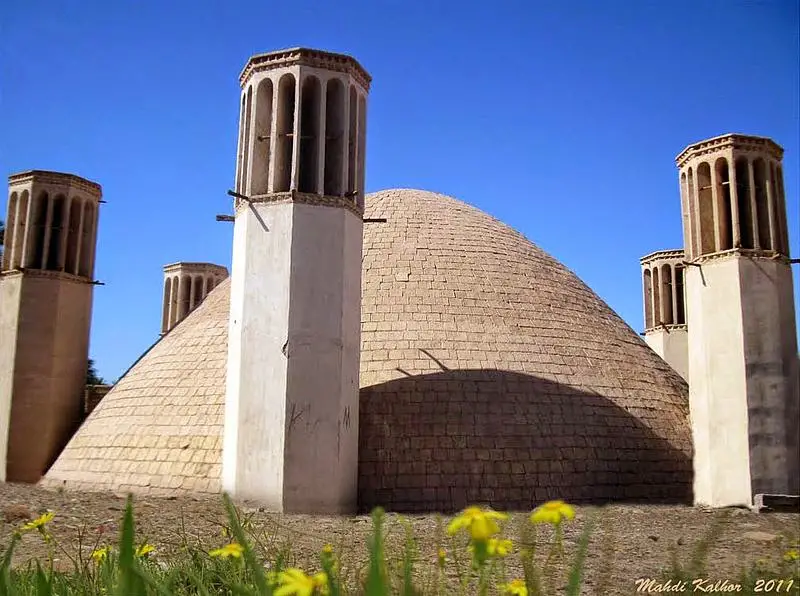
The Egyptians employed a different method to stay cool and used evaporative cooling. They would hang wet mats over doorways, and as the water evaporated, the air temperature was cooled, and moisture was added to the air. This process has also been used throughout history.
Native Americans also used this method and built water trenches beneath their dwellings. They used the evaporative cooling of the water to stay refreshed.
Other cultures used the landscape to stay cool. The Anasazi, Native Americans who lived in southwestern Colorado, were able to thrive by building their homes into the rock face of a canyon where they were shaded from the sun.
In addition to these ways to stay cool, hand fans have been a method of choice for thousands of years in many cultures around the world. Between the 13th and 15th centuries, fans arrived in Europe from the Middle East, China, and Japan. And in the 16th century, the Chinese folding fan became popular in Europe.
The next step forward in cooling came about when the first ceiling fan appeared in India in the 16th century. It was called a punkah and was made from palm leaves or cloth that was attached to a frame. The fans were moved manually by someone pulling on a cord attached to the frame, moving the air in a room.
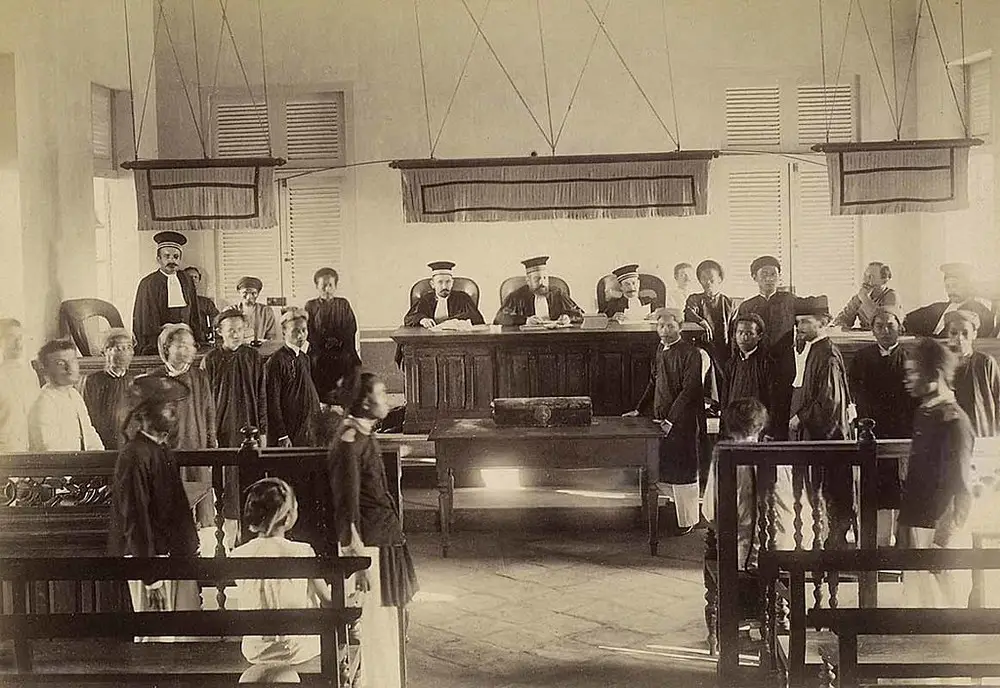
In the United States in the 1860s, ceiling fans were found in larger buildings and were belt-driven and connected together. The fans were powered by steam or water systems. The invention of the desktop fan came about in 1882 by an American electrical engineer named Schuyler Skaats Wheeler. Wheeler attached a two-bladed prop to an electric motor.
In the same year, the electric ceiling fan was invented by Philip Diehl, who worked for the Singer Manufacturing Company, the company that makes sewing machines. He added fan blades to a sewing machine electric motor and attached it to the ceiling. He later received a patent for his design in 1889.
Electric fans during this time were mainly used in larger establishments or by those with the means to purchase them. People that traveled west in America during the late 19th century didn’t have that luxury. Still, they found that houses carved into a hillside, built underground, or made from sod, were excellent insulators from the heat and even worked in the winter to stay warm.
In the 1920s, the first electric fans began to appear in homes since industrial advances allowed the cost of production to decrease. As a result, more people had an easier way to stay cool, but a more significant development in cooling had already begun.
Modern Cooling
In 1902, Willis Carrier, a 25-year-old engineer, invented the modern air conditioner. He didn’t do it to cool off people. He did it to reduce the humidity in a printing plant so the magazine pages in the plant wouldn’t wrinkle.
In 1922, he invented the centrifugal chiller and a central compressor. The public got their first look at this new amazing device in 1925. This invention probably shaped the rest of America. Cities in the desert were able to become habitable, it was used in rail cars and theaters, people were able to work comfortably in the summer and were finally able to cool off in their own homes.
But the spread of residential air conditioning came slowly. In 1965, only 10 percent of U.S. homes had an air conditioner. Many still used “swamp coolers” that used the principle of evaporative cooling along with a fan. While they did provide a cooling effect, they were nowhere near as efficient as Carrier’s invention.
By 2019, 87% of American homes had some type of air conditioning, but there are still areas in the world today where it is scarce. The Europeans don’t have it as much as Americans, and parts of Africa, India, and Asia continue to stay cool without it. But over 3 billion people in the tropics and subtropics are expected to get it in the coming years, according to a 2015 study in The Proceedings of the National Academy of Sciences.
It is safe to say that air conditioning is one of the greatest inventions of the 20th century. The entire computer age revolves around air conditioning and makes it all possible. Air conditioning is required for servers to transmit data across the internet as they have to stay incredibly cool because of the buildup of heat. The space program would never have existed, and Google wouldn’t be a company without it.
There have been many other breakthroughs for staying cool such as the use of new refrigerants and improvements in the efficiency of air conditioners since Carrier’s invention. It’s safe to say that the history of air conditioning has moved our society in innumerable ways, and new innovations will continue to take hold in the 21st century.
So when you go to twist that knob on your car’s air conditioner or push a button at home because you don’t want to break out in a sweat, just remember what it took to get us there.


